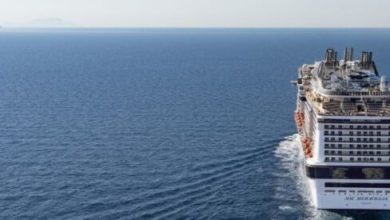THE GUGGENHEIM BILBAO: If you build it, they will come
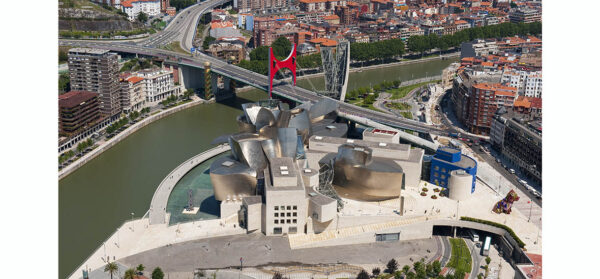
A shiny red sightseeing bus, a common sight in most European cities, might have been an anomaly here in Old Bilbao if not for the reinvention of Spain’s largest Basque city as a mecca for art and culture.
Bilbao’s most famous landmark is, of course, the Guggenheim Bilbao, one of the most admired and iconic works of contemporary architecture in the world. When it opened in 1997, it was hailed as the greatest building of its time, a brilliant 20th century masterpiece, artfully integrated by Canadian-American architect Frank Gehry into the former docklands of Bilbao’s 19th century urban environment and its surrounding area. It projects an image of the industrial power that drove this city to its former importance as a mining and shipbuilding centre on the Nervion river.
It rises out of the city’s jumble of buildings and styles like a mirage, its shimmering presence having transformed the decline and grime of a waning age of industry into a fantasy ship of contemporary art and culture on the banks of the river.
The river environment was polluted, an urban blight of gridlocked traffic and crumbling warehouses. A look at Zorrotzarre, Bilbao’s latest urban renewal project, whose Master Plan was designed by the late, great Zaha Hadid, is a glimpse of pre-Guggenheim riverside Bilbao. The state-of-the-art new football stadium, the Norman Foster-designed metro and its futuristic entrances, and the Zaha Hadid urban redevelopment all speak to a governmental awareness of the power of art and architecture to spark fundamental change. It worked spectacularly well for Bilbao.
The museum resulted from a partnership between the Solomon R. Guggenheim Foundation in New York and the governments of the city of Bilbao and the Basque region. The governments agreed to cover the construction cost, establish an acquisition fund, pay the Guggenheim Foundation a one-time fee, and subsidize the museum’s annual budget. The Guggenheim agreed to manage the museum, rotate parts of its permanent collection through it and organize temporary exhibitions. The “Bilbao effect” is a term economists use to refer specifically to the social and economic impact of the Guggenheim Museum, opened in 1997.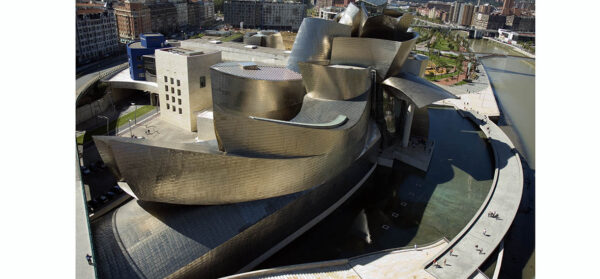
In the 26 years since the museum opened, the returns have been rewarding. The Guggenheim Bilbao remains a major attraction and has transformed a hard-to-get-to, why-bother-to-go-anyway city into a touristic must-see: since 1997, some 20 million people have visited this city of about 350,000. The Guggenheim became a strong global brand, vastly surpassing its origins as a small U.S. institution. In 2022, the year of its 25th anniversary, it welcomed 1,289,147 visitors, half of whom travelled from other countries.
They came to see the work of art that is the building in its own right. Gehry chose titanium for the museum’s outer skin. The finish of the approximately 33,000 extremely thin titanium sheets provides a rough and organic effect, adding to the material’s colour changes, depending on the weather and light conditions. The other two materials used in the building, limestone and glass, blend sculpturally with the titanium. In one corner of the second floor, the titanium sheets extend into the interior so visitors can actually touch them and get a close-up look at how they behave with the light.
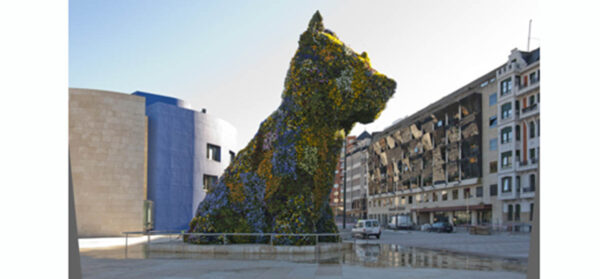
Visitors came to see permanent and visiting exhibits of works by Spanish and international artists and the museum’s enormous Motherwell, Rauschenberg and Warhol masterpieces. In front, the enormous “Puppy” flower sculpture by Jeff Koons greets awestruck tourists (it is more than 40 ft. tall and is literally still growing; the flora are changed in spring and fall to reflect seasonality) and in back, visitors casually stroll through the legs of the outsize “Maman” metal and marble sculpture by Louise Bourgeois, one of the world’s largest and best-known sculptures (other versions are also on display at London’s Tate Modern and the National Gallery of Canada as well as in Japan, the United States, and Qatar).
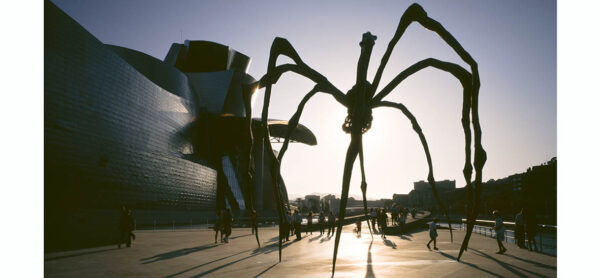
They came to walk around the well-known Richard Serra permanent sculpture installation – eight enormous works in hot-rolled steel collectively titled “The Matter of Time” in a huge gallery that is part of the sculptural field.
The Guggenheim Bilbao, building and contents combined, is a stupendous experience.
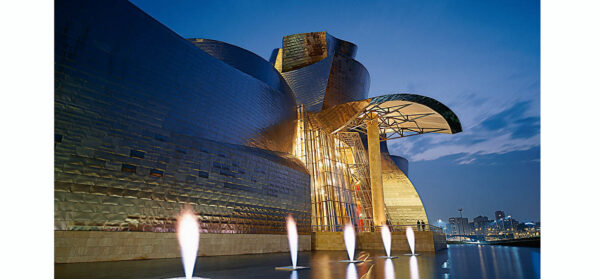
There’s a Frank Gehry quote that reads: “There’s a range of creativity possible and I think it behooves us to push the envelope.”
Thanks to the Guggenheim Foundation and Frank Gehry’s vision, Bilbao has become a destination for art pilgrims from around the world.
First published at Travel Industry Today

